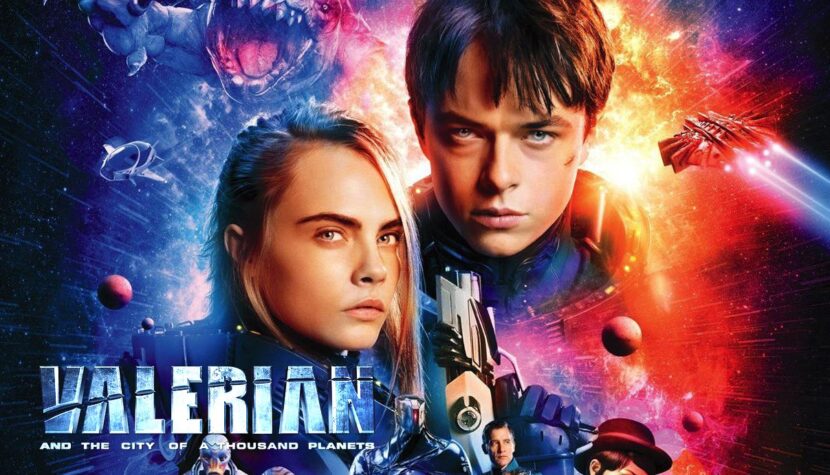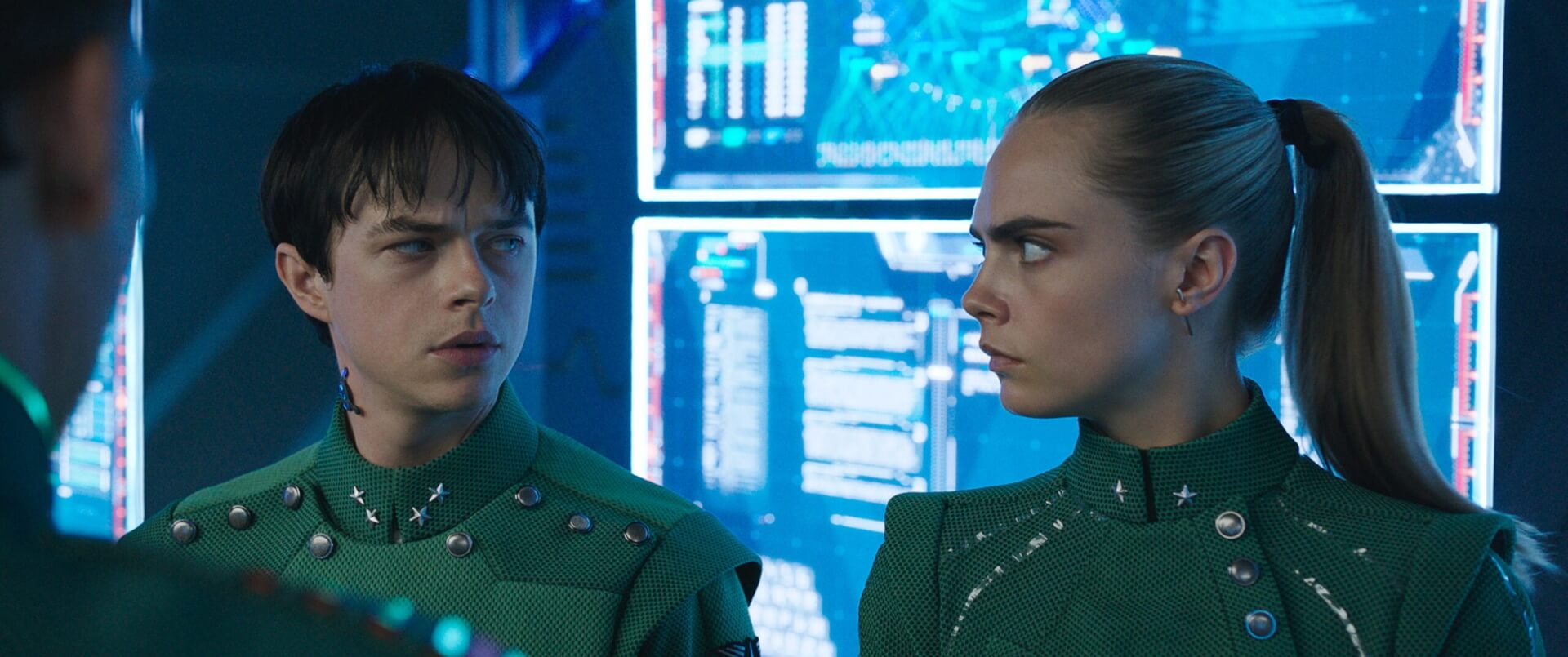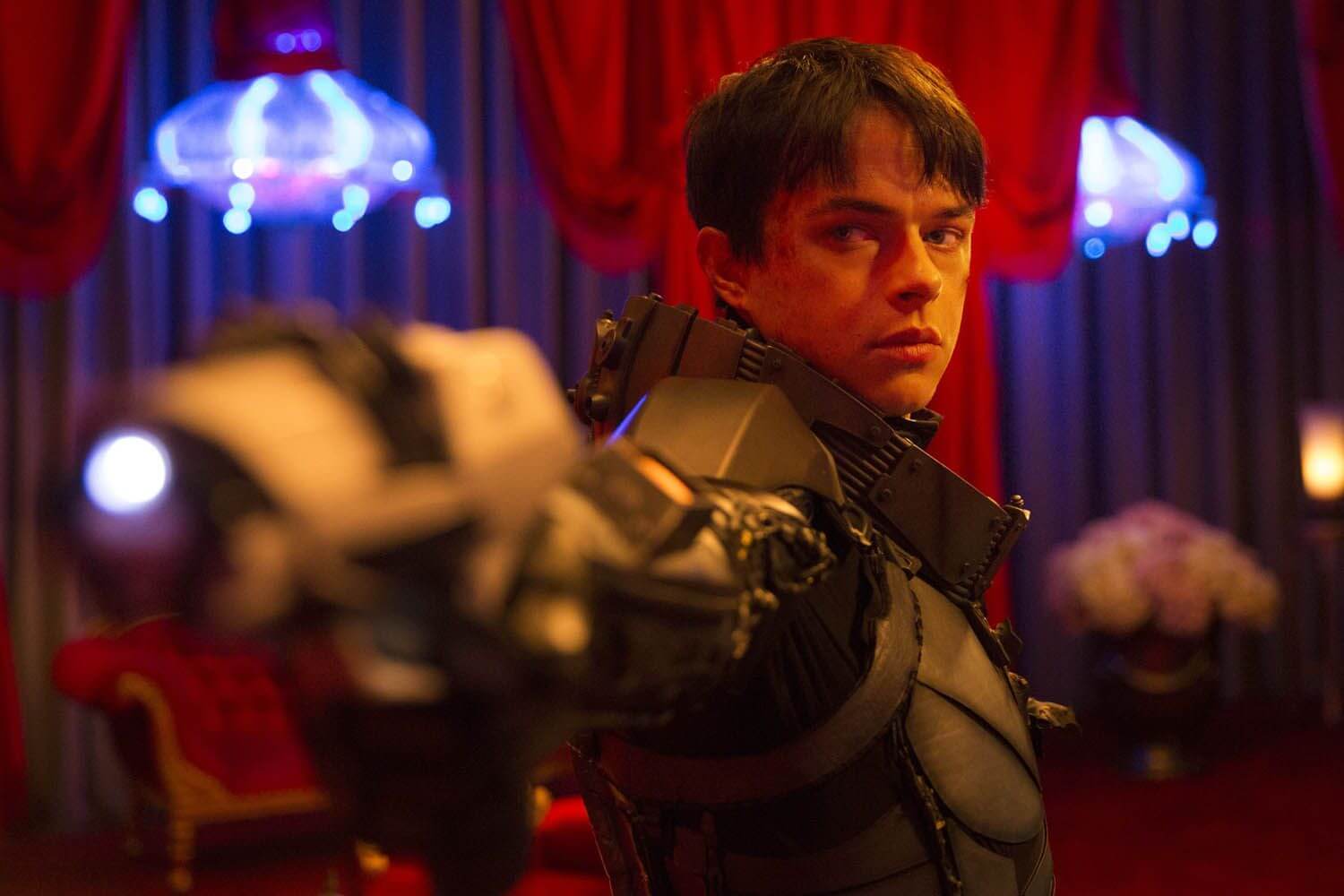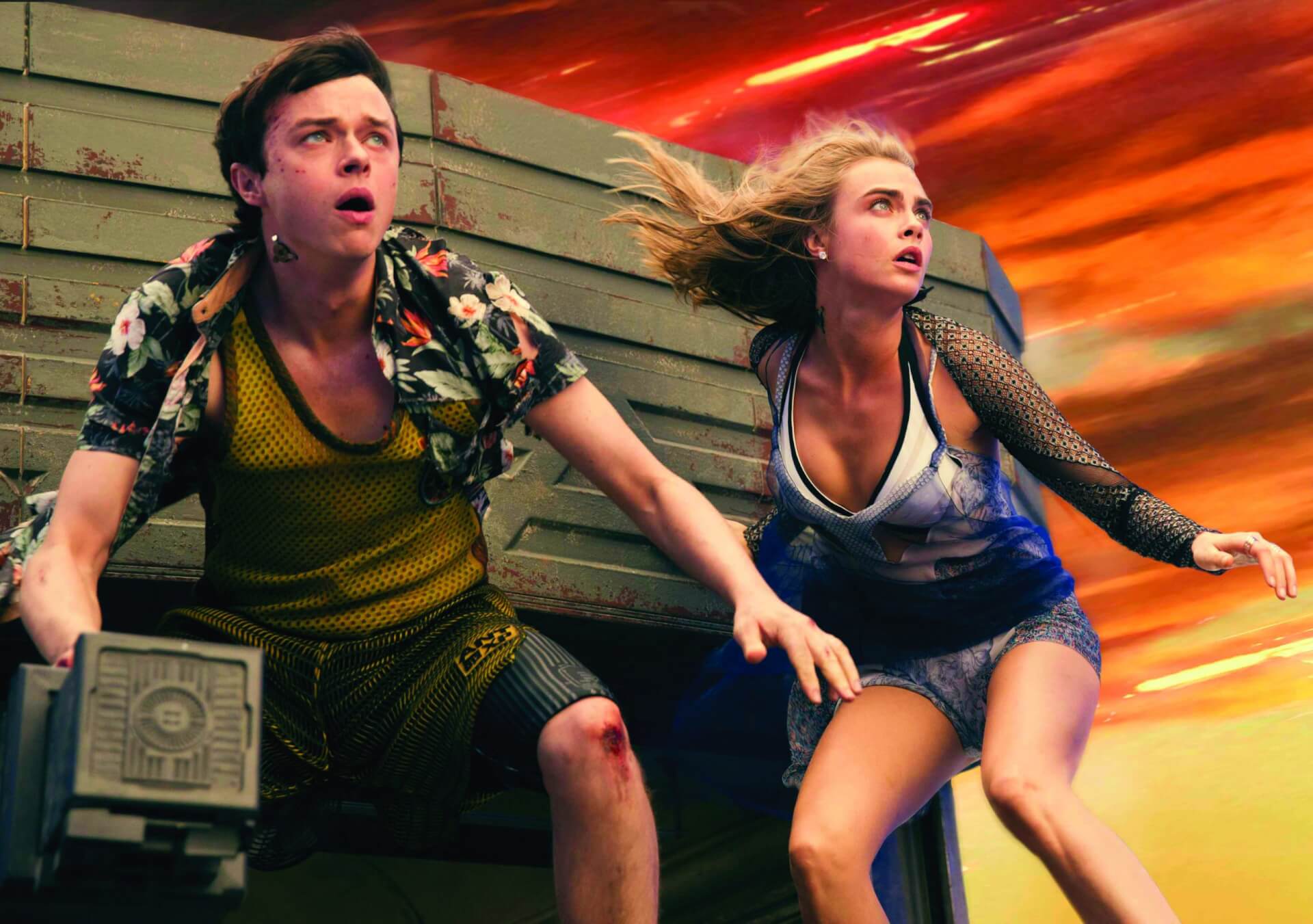VALERIAN AND THE CITY OF A THOUSAND PLANETS. Luc Basson is back… in space

First, we see authentic photos from the 1975 Soyuz-Apollo mission, one of the few moments during the Cold War when Americans and Russians overcame divisions and collaborated. A quick jump to 2020, and a space station suspended above our planet welcomes one nation after another, then more, growing over many years. Soon, not only humans join the common project, but also various alien species.
The dialogue-free sequence is illustrated with David Bowie’s Space Oddity, a melancholic yet strangely lively piece that suits the station’s ongoing story. At one point, its development begins to threaten Earth, and a decision is made to release it into further regions of space. Centuries pass, and Alpha grows to astronomical proportions, becoming the titular City of a Thousand Planets, inhabited by diverse species from the entire galaxy, sharing knowledge and living in peace. Meanwhile, on a planet inhabited by Pearls, a tragic event unfolds that could also threaten Alpha and the foundations on which it was built. Up to this point, Valerian and the City of a Thousand Planets, an adaptation of the famous French comic book series, captivates with narrative economy, largely forsaking dialogue in favor of visuals. This, combined with the effectiveness of the presented vision, leaves a colossal impression. Besson, like few other directors, understands the power of the frame and the unnecessary nature of spoken lines. However, even he sometimes overuses dialogue. In the first quarter of his latest production, we hear little more than excellent sound effects, Bowie’s song, and Alexandre Desplat’s wonderful music. The spectacle hasn’t truly begun yet, but the story has already intrigued me, not only visually but also in terms of storytelling. However, nothing lasts forever.

The spell breaks when the main characters of Valerian and the City of a Thousand Planets, Valerian and Laureline, a well-coordinated duo of special agents, enter the stage. He, a major who looks like a teenage partygoer (Dane DeHaan with perpetually tired eyes), clumsily tries to seduce his partner into bed or to the altar. She, a sergeant, has a model’s body (not surprising since she is played by Cara Delevingne) and an exceptionally restrained nature—rejecting advances, trying to focus on the mission, though she is secretly devoted to Valerian. If they are to be the guardians of order in the 28th century, the future looks exceptionally bleak.
Besson’s cinema has always contained an element of childlike naivety, evident in the drawings of the main characters or in the storylines tending towards fairy-tale-like narratives. Over time, this naivety began to weigh down the stories, making it difficult to deflect accusations of infantilism, as seen in Lucy not so long ago. However, that film had vigor and a desire to move forward, regardless of increasingly abstract, and for many, simply foolish ideas. What to make of Valerian, an animated comic, not so much a new adventure but fantastically rich in every technical aspect, where our guides are kids with guns talking mainly about love and commitment or the lack thereof?

It’s easy to blame Besson the screenwriter for the literalness and lack of lightness in the dialogues. It wants to be funny and romantic but often comes off as stiff. The DeHaan–Delevingne duo also grates—especially him, not hero material, though he wins in dramatic scenes, while she compensates with charm and a strong personality, defenseless against awkward lines. Separately, they look better than together, confirming poor casting; their relationship seems more artificial than the computer-generated reality. The supporting cast fares better—Clive Owen as a stubborn military man, Rihanna as a shape-shifting alien, and Ethan Hawke as her pimp.
Since the main characters of Valerian and the City of a Thousand Planets don’t work, it’s hard to engage in the story. After some time, the plot becomes a series of episodes starting with Valerian or Laureline getting into trouble, followed by the other rushing to the rescue. The mechanical nature of this maneuver is so obvious that it’s surprising when, in the finale, the film returns to the initial tragic plot of the attack on the Pearl planet. Better late than never, especially since the intrigue is a strong point of the story.

From the beginning, Valerian and the City of a Thousand Planets was supposed to be, above all, a grand science fiction spectacle, the realization of Besson’s dreams to create on screen the cosmic worlds from the comic he read as a teenager. Indeed, the director enchants viewers with visual and conceptual richness, visible in the smallest details, from the concept of each character, even those in the background (the trio of clever duck-like traders is sure to become audience favorites), to the rules by which a given world functions (the action in the invisible market is captivating mainly due to the complexity of navigation in this fantastic place). However, this meticulous attention to every element of the created world also works against the spectacle. Besson wants us to see everything, constantly slowing down the action. When it speeds up, other fascinating things escape our attention. It’s also noticeable that after landing the main characters on Alpha, their adventures—although incredibly vibrant and imaginative—are limited to moving through dark and less colorful alleys and corridors among the shady clientele. This suggests that development and peace have their price, and in the heart of the City of a Thousand Planets, a shameful secret is hidden. It serves the plot, but personally, I would prefer more adventures in brighter and more colorful locations.

Those expecting a second Fifth Element should prepare for a completely different experience. Valerian and the City of a Thousand Planets is closer not to a space opera with Bruce Willis but to Arthur and the Invisibles, a tale of a boy transformed into the titular Lilliput, discovering a completely different reality. In both films, artificial, computer-generated worlds are discovered by a child, but one wishes Valerian and the City of a Thousand Planets were more than an infatuated teenager whose decisions are largely influenced by a desire to impress or show off to a girl. In both, Besson approaches the subject with excessive reverence, wanting to do justice to the literary originals but losing what is the basis of his cinema—bold storytelling. We see it during the first 30–40 minutes, replaced later by boring dialogues and the need for a literal explanation of every twist of the plot.
I salute Besson’s ambition to bring his adolescent dream to the screen; moreover, the secrets of the plot are intriguing and correlate interestingly with contemporary politics. Valerian and the City of a Thousand Planets is a work of great beauty and imagination, a confirmation of executional perfection. But next time, I’d like Besson to make a film not just for himself. Knowing the French director, his persistence, and love for these characters, it’s almost certain that we’ll see a sequel—I’m waiting because the world of Valerian is too fascinating and rich to abandon after just one film.

